Costa Rica's Favorite Meal: The Casado
February 7, 2025
Costa Rica is a fabulous destination for luxury travelers, as well as seniors, couples, and families, not least because of its many excellent dining options.…
Read This Post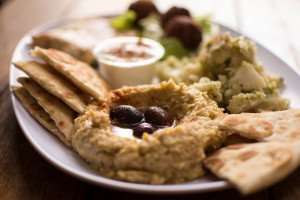 I found myself craving Middle-Eastern food over the weekend, so I did what I usually do: I decided to make a Middle Eastern dinner! But when my kids asked me what that meant, I found I had trouble answering. “Can it be Middle Eastern food if there is no falafel?” was one question. “I thought that was Greek!” was another comment.
I found myself craving Middle-Eastern food over the weekend, so I did what I usually do: I decided to make a Middle Eastern dinner! But when my kids asked me what that meant, I found I had trouble answering. “Can it be Middle Eastern food if there is no falafel?” was one question. “I thought that was Greek!” was another comment.
So what exactly is “Middle Eastern food”?
If the Middle East from a gastronomical standpoint refers back to the original area of the Fertile Crescent (you remember learning about that one back in elementary school?), then Middle Eastern food includes foods from what are modern-day Egypt, Jordan, Israel, Palestine, Syria, Lebanon, and Jordan, as well as Cyprus, a bit of modern-day Turkey, and a tiny bit of Iran. Is it even possible that this vast, diverse area shares a cuisine?
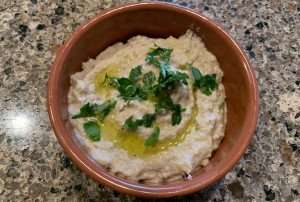 Discover all our culinary tours in Turkey.
Discover all our culinary tours in Turkey.
Yes! Of course, there are many variations from country to country (and region to region, and even house to house), but there are common themes as well: the use of certain ingredients such as olives, legumes, honey, yogurt, wheat, dried fruits, and rice (read about the original “seven species” of Israeli cuisine); and the presence of staple dishes like pita, kebabs, dolmas, hummus, and falafel.
The specifics, though, will vary – the use of certain ingredients, such as butter versus olive oil, the type of meats eaten (sometimes dictated by religious beliefs), the specific spices, or the manner in which the dishes are served. However, there is a surprising cohesion to the dishes. You may find one hundred and one types of kibbeh throughout the Middle East, but they are all kibbeh (a round ball of meat that has been stuffed with… more meat)!
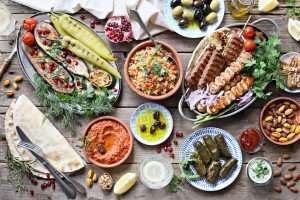 What is the Levantine cuisine?
What is the Levantine cuisine?“Levantine” references the geographical area known as the Levant. Look at a map of the Mediterranean and find its eastern edge: that is the Levant (the word “levant” refers specifically to the rising of the sun, i.e. in the east). This translates into present day Lebanon, Israel, Palestine, Syria, Jordan, Cyprus, and parts of Turkey. As you can therefore imagine, Levantine cuisine is a subset of the larger umbrella term Middle Eastern cuisine and shares its main characteristics.
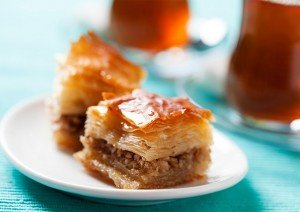 No, but there are definitely many cross-overs. Some of the most iconic dishes of Greek cuisine have sister dishes from the Middle East: dolmas, baklava (and other dishes that use phyllo dough), and pita. (An aside on pita: there are many variations and differences between Middle Eastern pita and that of other regions, but if we’re referring to a round, yeast-leavened wheat flatbread, then it is clear that it is a crossover dish throughout not only the Middle East but also Greece, Turkey, and into parts of Asia).
No, but there are definitely many cross-overs. Some of the most iconic dishes of Greek cuisine have sister dishes from the Middle East: dolmas, baklava (and other dishes that use phyllo dough), and pita. (An aside on pita: there are many variations and differences between Middle Eastern pita and that of other regions, but if we’re referring to a round, yeast-leavened wheat flatbread, then it is clear that it is a crossover dish throughout not only the Middle East but also Greece, Turkey, and into parts of Asia).
Check out all our cooking vacations in Greece.
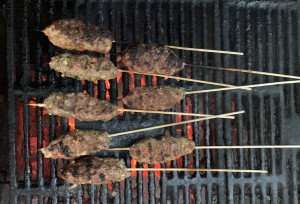 Is Middle Eastern food all the same?
Is Middle Eastern food all the same?No! Despite some common themes, ingredients, and dishes across Middle Eastern cuisines, an area as rich in history and culture as the Middle East has a great diversity in its gastronomy as well. And what better way to explore the differences in this wonderful cuisine than during an in-depth culinary tour?
Check out our Turkish lamb kebabi recipe with watermelon salad.
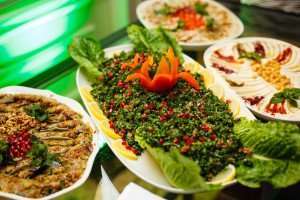 Turkey, for one! We have a variety of culinary vacations in Turkey, including on the Aegean coast and in Istanbul. Another option is our Cuisine & Culture of Israel tour, during which you can explore the many flavors of Middle Eastern food.
Turkey, for one! We have a variety of culinary vacations in Turkey, including on the Aegean coast and in Istanbul. Another option is our Cuisine & Culture of Israel tour, during which you can explore the many flavors of Middle Eastern food.
So what did I end up making for dinner? Grilled lamb kofta kebabs, fresh pita bread, two staple spreads (baba ganoush and hummus), a garlic-yogurt sauce, and a fresh cucumber and tomato salad. Check back for the recipes later this week!
What’s your favorite Middle Eastern dish?
By Peg Kern
Sign up to receive our newsletter, which includes travel tips, recipes, promotions, and information on our best cooking vacations. Find more photos, videos, food facts, and travel stories from The International Kitchen on Facebook, Instagram, Pinterest, Twitter, and YouTube.